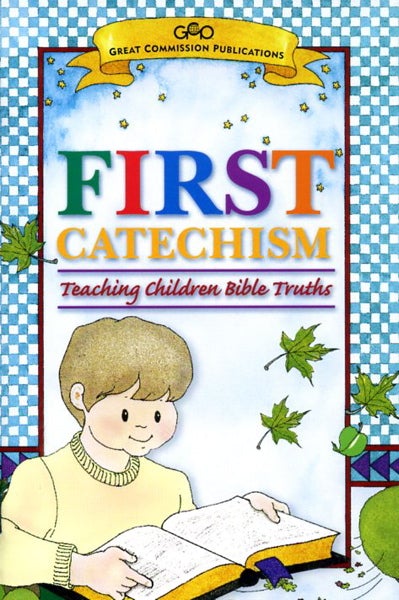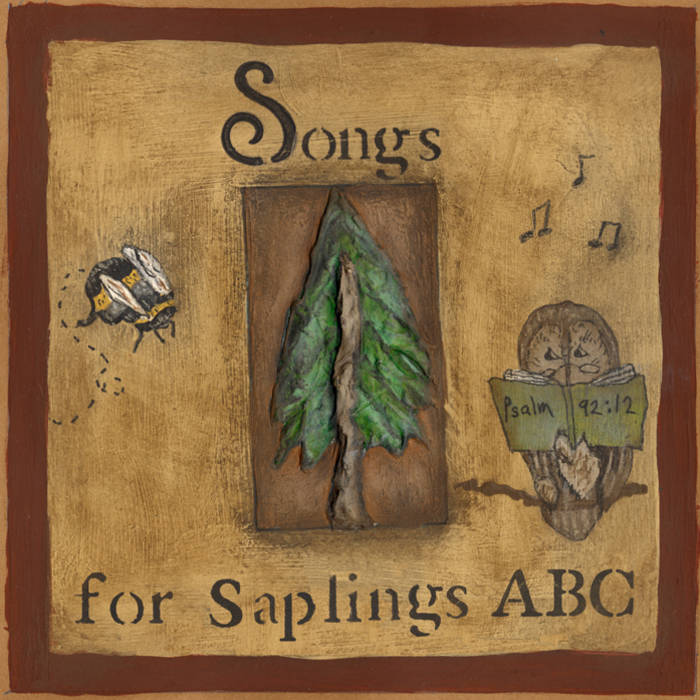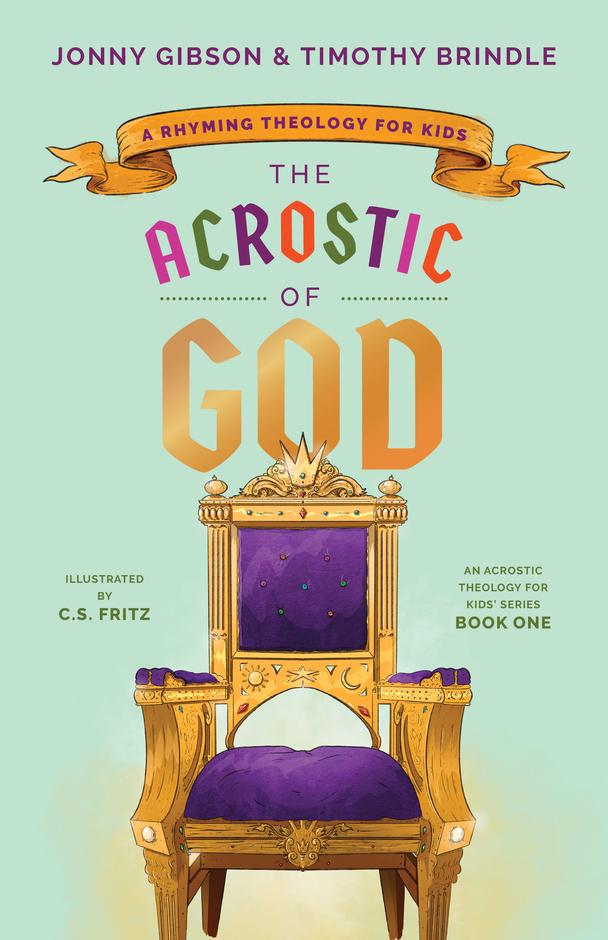This essay was adapted from Mark Earngey’s talk at our 20 October 2021 event. Watch or listen to his talk on our website.
God has always cared about raising the next generation. But how has he ensured that the knowledge of the Lord is passed on from parents to children throughout history? In this article, I want to, firstly, bring us into the story of the Bible and, secondly, bring us into the story of Christian history that comes after the canon of the Bible was closed. In doing so, I want to highlight two things: firstly, that God has always cared about children and youth being raised to know him and, secondly, that Christians have had some really great ideas about how to just do that.
1. Passing on the faith in the biblical story
a. Abraham
One of the really important places for us to start is remembering that God has always wanted children to know and to love him. He created Adam and Eve so that humanity would increase and fill and subdue the earth. The idea was that Adam and Eve’s children would know him and love him. But Adam and Eve’s faithlessness and fall into sin throws a really significant spanner into the works.
Which is why Abraham’s faith and rise into grace is just so marvellous. In fact, the beautiful covenant that God makes with Abraham has countless children in mind—more than the sand on the beach and stars in the sky (Gen 15:5, 22:17). But in order for this to happen, Abraham is required to pass on the faith to his children: God tells Abraham that he needs to “direct his children and his household after him to keep the way of the Lord by doing what is right” (Gen 18:19). Abraham must direct his children—that is, instruct them so they will keep the way of the Lord.
b. Moses
It’s little wonder, then, that when we come to Moses, we see the same thing. Deuteronomy 6 records us the special giving of the Shema—“the Lord our God, the Lord is one”—and the command to “Love the Lord your God with all your heart and with all your soul and with all your strength” (v. 5). But then God says, “Pass these on”. “Impress them on your children” (v. 7). These commandments are not just for you; you need to pass them on. And you need to do that when you’re sitting at home, when you’re walking along the road, when you’re lying down, and when you get up (v. 8). In fact, he tells the Israelites to take these instructions, tie them onto their hands and heads, and write them onto their houses and gates (v. 8). That’s how important they are.
c. Proverbs of Solomon
I think this sort of thing is probably in the background of Solomon’s Proverbs—especially at the start of the book:
Listen, my son, to your father’s instruction
and do not forsake your mother’s teaching.
They are a garland to grace your head
(Prov 1:8-9)
d. Jesus
Hundreds of years later when Jesus Christ comes into the world, we see a similar stance towards passing the faith onto children. In that beautiful episode in Matthew 19:13-15, we see Jesus praying for children, caring for children, and declaring that the kingdom of heaven is also theirs. Furthermore, after Jesus’ mighty sin-bearing death and earth-shattering resurrection, he declares in the Great Commission that his disciples, both adults and children, need to be baptised and taught to obey all his teachings (Matt 28:19-20).
e. Paul
We can also see the faith being passed on to Jesus’ disciples—his followers, both young and old—in the Apostle Paul’s writings. In Ephesians 6, fathers are not to exasperate their children, among other weighty things; instead, they are to “bring them up in the training and instruction of the Lord” (v. 4). Of course, Paul also recognises the important place of motherhood for passing on the faith: he speaks about the transmission of faith in Timothy’s own life and story: from his mum Eunice and grandma Lois (2 Tim 1:5).
f. Catechise
So even from this whistle stop tour of the biblical story, we can see that the passing on of the faith to the next generation really does matter to God. In fact, one of the key words used to describe this is “catechising”: it comes straight from one of the Greek words of the New Testament and it means “teaching” or “instruction” (cf. Luke 1:4; Gal 6:6). It’s not the only kind of teaching and instruction, but it’s one of the big ones. And it’s something that Christians have kept on doing in the church and in the home ever since New Testament times.
2. Passing on the faith in the historical story
a. Catechising in the early church
Now in the early church, catechesis was the moral and doctrinal instruction given to new converts who rejected their pagan past and embraced the Lord Jesus Christ. So, for instance, we know from Hippolytus, writing in the third century, that a catechumen (i.e. someone being catechised or taught) was taught the basics of Christianity for three years before they could belong to the church properly. We also know from Cyril’s Procatechesis in the fourth century that lots of doctrine was taught and examined—like the virgin birth, the cross of Christ, the resurrection, the ascension, and so forth.
But after the church exploded geographically, it started to explode organically, largely as a function of children born to Christian families. So in the following centuries, catechesis took place in the church and in the home.
b. Catechising in the Reformation
That’s what we find when we come to the mighty Reformation in the 16th century. The great German friar Martin Luther wrote catechisms, and he expected churches and families to use them. In fact, he even wanted Christians to drill themselves with catechetical questions:
… I appeal once more to all Christians, especially the pastors and preachers, that they not try to become doctors too soon and imagine that they know everything. (Vain imaginations, like new cloth, suffer shrinkage!) Let all Christians drill themselves in the catechism daily, and constantly put it into practice …1
What are these questions? They’re short and memorable—easy to teach and easy to learn—questions like, “What does ‘You shall have no other gods before me’ mean?” Answer: “That we should fear, love and trust in God above all things”.2
The great English Reformer Thomas Cranmer published a very important catechism. The preface to his catechism sets out the biblical warrant for catechesis, and notes the importance of teaching, among other things, the Ten Commandments, the Apostles’ Creed (which he calls “The Articles of the Christian Faith”) and the Lord’s Prayer:
And truly it is no new thing that the children of godly parents should be instructed in the faith and commandments of God, even from their infancy. For does not God command his people to teach his law to their children, and their children’s children? … Does it not appear by plainly expressed words of Paul, that Timothy was brought up even from a child in the Holy Scriptures? Have not the commandments of Almighty God, the Articles of the Christian faith, and the Lord’s Prayer, been necessarily always (since Christ’s time) required of all, both young and old, that professed Christ’s name?3
The great French Reformer John Calvin, in a letter to the Duke of Somerset, said that the church will die out without good catechesis:
Believe me, Monseigneur, the Church of God will never preserve itself without a Catechism, for it is like the seed to keep the good grain from dying out, and causing it to multiply from age to age. And therefore, if you desire to build an edifice which shall be of long duration, and which shall not soon fall into decay, make provision for the children being instructed in a good Catechism, which may shew them briefly, and in language level to their tender age, wherein true Christianity consists.4
In other words, says Calvin to this newly Reformed Church of England, if you want to build a strong church, you need catechesis. You need to catechise its children.
c. Catechising today?
What about catechesis in our contexts? What about catechesis in our churches? We’ve got some great children’s and youth ministries. We’ve got great books for youth and great music for children. But what about this kind of question and answer catechisms?
3. Principles from the past for the present
Let me present some big principles from the past that I think we can adapt for the present.
a. Three biggies
Firstly, historically, there are three big features of Christian catechising: the Apostles’ Creed, the Lord’s Prayer and the Ten Commandments. What the historic creeds and catechisms tend to do is use those three as a kind of super structure to explore other points of biblical doctrine.
So a catechism might start with the phrase, “I believe in God the Father Almighty”, and it might ask, “Well, who is God and how many persons are there in God, and what are their names?” So it might have the structure from the creed, but ask particular questions.
b. Two techniques
Secondly, historically, there are two major techniques used in Christian catechesis: repetition and pointing. Repetition is a great way of drilling ideas and concepts into our heads and down into our hearts. In some ways, it’s gone out of fashion these days. People used to speak ill of rote learning, but I think it’s disappeared at our peril.
What about pointing? Pointing is basically asking pointed questions:
Question: Who made you? Answer: God.
Question: What else did God make? Answer: Everything!
Question: Why did God make you and everything? Answer: For his glory.
In my home, we do this with our children with hand actions.
c. One habit
The last principle from the past for the present is that catechising ought to be one single habit. That is, it shouldn’t just be a clunky, awkward, occasional thing, but something that’s just naturally woven into the fabric of church and home life. So to paraphrase Deuteronomy, do it when you sit down at home for dinner, when you walk along the road to drop the kids off at school, and just before when you lie the kids down at night.
4. Give it a go!
Now, you might think, “Well, how do I get started with all of this? It sounds a bit tricky.” I would just say, “Give it a go”. As a starting point, check out First Catechism: Teaching Children Bible Truths. If you like to sing, consider using Songs for Saplings. Or for a bit of fun, try The Acrostic of God. Try doing them at the dinner table or even the change table. Above all, take a non-anxious approach: remember, it’s God’s great story!
Catechesis is part of the story of God’s people in the Bible, and part of the story of God’s people in history. It’s a way of passing on the faith to the next generation. Let me encourage you to hook into that part of it and give it a go.
Except as otherwise noted, Bible quotations are from THE HOLY BIBLE: NEW INTERNATIONAL VERSION®. NIV®. Copyright © 1973, 1978, 1984, 2011 by International Bible Society, www.ibs.org. All rights reserved worldwide.
Endnotes
1 Martin Luther, The Large Catechism of Dr Martin Luther, 1529: The annotated Luther study edition , ed. Kirsi I Stjerna, LW translation (Minneapolis: Fortress, 2016) 294.
2 Martin Luther, Small Catechism, 1529.
3 Thomas Cranmer, Catechismus, 1548.
4 John Calvin, Letter to Somerset, 1549.





